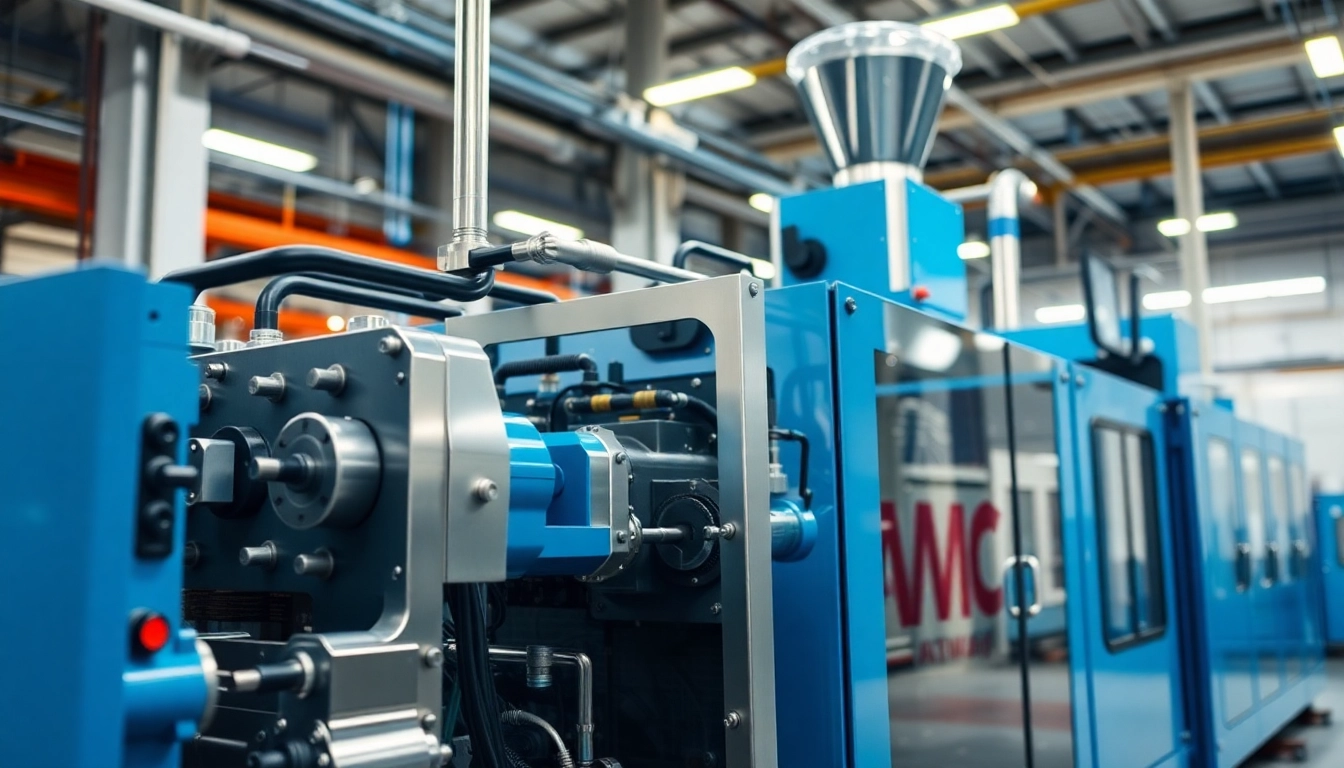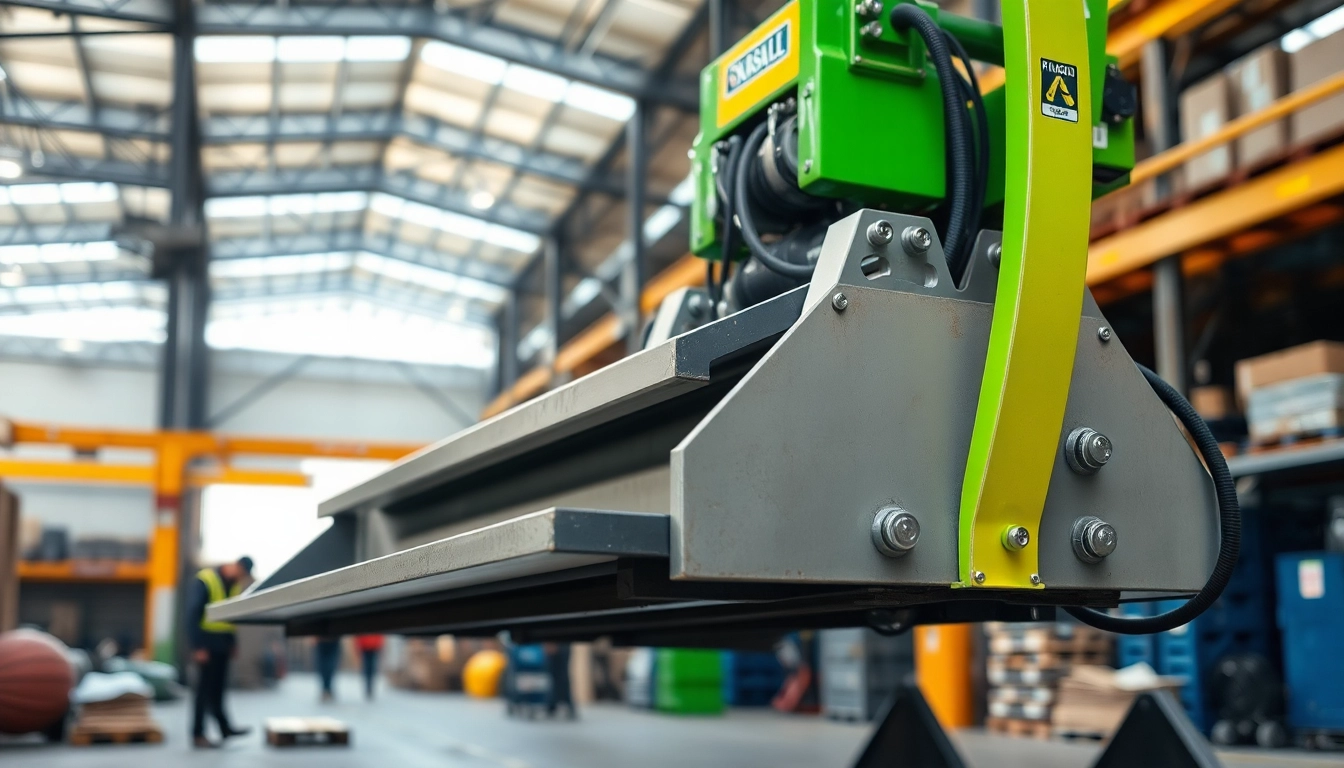Understanding Blow Molding Technology
What is Blow Molding?
Blow molding is a manufacturing process used to create hollow plastic parts and containers. It involves inflating a heated plastic tube (or parison) inside a mold to form a specific shape. The technology is widely utilized in numerous industries, including packaging, automotive, and consumer goods, due to its efficiency and versatility.
There are three primary types of blow molding processes: extrusion blow molding (EBM), injection blow molding (IBM), and stretch blow molding (SBM). Each method serves different production needs and offers unique benefits. Understanding the distinctions between these processes is essential when considering the purchase of a blow molding machine or when seeking a Blow Molding Machine Supplier.
The Different Types of Blow Molding Processes
Blow molding processes can be categorized mainly into three types:
- Extrusion Blow Molding (EBM): In this method, plastic is melted and extruded into a parison. The parison is then inflated into a mold to form the final product. EBM is ideal for creating large hollow parts, such as bottles and containers.
- Injection Blow Molding (IBM): IBM combines injection molding and blow molding techniques. In this process, plastic is first injected into a mold to form a preform, which is then inflated into the final shape. This method is typically used for smaller, more complex shapes that require high precision.
- Stretch Blow Molding (SBM): SBM is a derivative of injection blow molding that involves stretching the preform during the blowing phase. This process allows for the production of lightweight containers with enhanced strength and clarity, commonly used for beverage bottles.
Applications of Blow Molding in Various Industries
Blow molding technology is integral in a multitude of sectors due to its efficiency and adaptability. Its applications include:
- Packaging: One of the most significant applications of blow molding is in the packaging industry. Products such as plastic bottles, containers, and jars for food, beverages, and chemicals are commonly produced through this technology.
- Automotive: The automotive industry utilizes blow molding for parts such as fuel tanks, bumpers, and air ducting systems. These components benefit from the lightweight and durable properties of blow-molded plastic.
- Consumer Goods: Many everyday products, including toys, household items, and sporting equipment, are manufactured using blow molding. The customization options available allow for enhanced design and functionality.
- Medical Devices: In the medical field, blow molding can create components like IV bags and medical delivery systems where precision and sterility are essential.
Choosing the Right Blow Molding Machine Supplier
Evaluating Supplier Capabilities and Experience
When selecting a blow molding machine supplier, evaluating their capabilities and experience is crucial. A reputable supplier should have a proven track record of providing reliable machines that meet industry standards. Consider their experience in various sectors and whether they have successfully delivered products that cater to specific needs within those industries.
Look for suppliers that offer a range of service options, including customizations tailored to your unique production requirements. Review case studies and testimonials to gauge customer satisfaction and reliability.
Key Features to Look for in Blow Molding Machines
When examining blow molding machines, several key features should influence your decision:
- Automation Level: Determine whether you need a fully automated, semi-automated, or manual machine based on your production volume and labor capabilities.
- Material Compatibility: Ensure the machine can process the materials required for your products, such as polyethylene, polypropylene, or PET.
- Mold Change Time: Machines with rapid mold change capabilities can reduce downtime and enhance productivity.
- Energy Efficiency: Look for machines designed with energy-efficient technologies that can help lower operational costs.
Importance of After-Sales Support and Service
After-sales support is a critical aspect when selecting a blow molding machine supplier. It ensures that any operational issues can be quickly addressed to minimize downtime. Reliable support options should include:
- Technical Support: Providers should offer robust technical support, including troubleshooting help, spare parts availability, and maintenance services.
- Training Services: Ensure the supplier offers training for your staff on operating and maintaining the machines effectively.
- Warranty and Guarantees: A comprehensive warranty can provide peace of mind and safeguard your investment.
Top Blow Molding Machine Suppliers in the Market
Comparison of Leading Brands
The market is filled with various blow molding machine suppliers, each offering distinct advantages. Here’s a brief overview of some of the top brands:
- Uniloy: Known for its innovative technology, Uniloy stands out as a leader in the blow molding sector, offering four unique blow molding technologies and comprehensive support.
- Parker: With over 30 years of experience, Parker boasts a global presence with over 3,000 production lines across 102 countries, providing a range of EBM and SBM machines.
- Jomar Corporation: Specializing in injection blow molding, Jomar offers a range of machines tailored to the specific needs of the automotive and packaging industries.
- Bekum: Known for compact and energy-efficient machines, Bekum focuses on providing quality equipment with a reputation for reliability.
Supplier Certifications and Quality Standards
Supplier certifications indicate compliance with quality and safety standards. Look for suppliers who are ISO certified or have received certifications for industry-specific requirements. These certifications ensure that the machines are built to meet stringent quality standards, enhancing reliability and performance.
Customer Testimonials and Case Studies
It’s essential to evaluate customer testimonials and case studies when selecting a blow molding machine supplier. Positive feedback and documented case studies can provide insights into the supplier’s capabilities, service quality, and the machines’ performance in real-world applications. Don’t hesitate to reach out to former clients to gather honest opinions.
Cost Considerations in Blow Molding
Factors Affecting the Price of Blow Molding Machines
Multiple factors influence the pricing of blow molding machines. Understanding these factors can help businesses budget effectively:
- Machine Type: The complexity and capabilities of the machine typically dictate its price. EBM machines tend to be more affordable than advanced IBM or SBM machines.
- Production Capability: Machines that can produce higher volumes tend to have a greater upfront cost due to the technology and features involved.
- Customization: Customized machines designed to meet specific production requirements may have higher costs associated with their development and manufacturing.
- Brand Reputation: Established brands with proven performance may command higher prices due to their reliability and support services.
Return on Investment Calculation
Calculating the return on investment (ROI) for a blow molding machine involves analyzing the expected increase in production efficiency, quality of products, and potential savings on labor and material costs. To better understand the ROI:
- Estimate the projected output and revenue increase from using the new machine.
- Factor in operational savings, such as reduced energy consumption and lower maintenance costs.
- Compare these figures with the total cost of the machine, including acquisition, installation, and training expenses.
By thoroughly assessing these components, businesses can make informed decisions about their investments in blow molding technology.
Financing Options for Businesses
Financing options can make the acquisition of blow molding machines more accessible for businesses. Explore various financial solutions, such as:
- Leasing: Leasing machines can allow businesses to spread costs over time while retaining the option to purchase the equipment at the lease’s end.
- Loans: Small business loans can be an excellent option for acquiring the necessary machinery while maintaining cash flow.
- Grants and Incentives: Research potential grants and incentive programs that may be available for purchasing energy-efficient or innovative machinery.
Future Trends in Blow Molding Technology
Innovations in Blow Molding Machinery
The blow molding industry is witnessing rapid advancements in technology. Key innovations include:
- Smart Manufacturing: The incorporation of IoT (Internet of Things) technology enhances machine monitoring and efficiency through real-time data analysis and adjustments.
- Energy Efficiency Improvements: New technologies are focused on reducing energy consumption, leading to lower operational costs and a smaller carbon footprint.
- Integration with Automation: The trend toward automation continues to grow, integrating robotics into the blow molding process for added precision and efficiency.
The Rise of Sustainable Practices
As sustainability becomes increasingly important, blow molding manufacturers are exploring eco-friendly production methods. Innovations include:
- Recyclable Materials: Utilizing recycled plastics and biodegradable materials is becoming a common practice in blow molding.
- Energy-efficient Processes: Manufacturers are striving to adopt practices that reduce energy consumption and waste, fostering a more sustainable production environment.
- Closed-loop Systems: These systems allow for the reuse of materials in the blow molding process, minimizing environmental impact.
Predictions for the Blow Molding Market
The blow molding market is expected to continue its expansion, driven by advancements in technology, increased demand for lightweight packaging solutions, and growing emphasis on sustainability. Industry experts predict:
- Further integration of smart technologies that enhance operational efficiencies and machine performance.
- A significant shift toward environmentally friendly practices as consumer preferences increasingly favor sustainable products.
- Growth in the automotive and pharmaceutical sectors as new applications of blow molding technology emerge.



